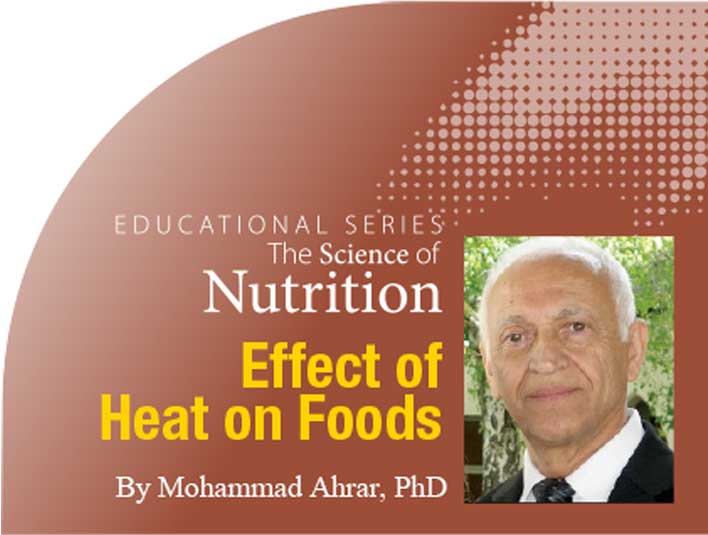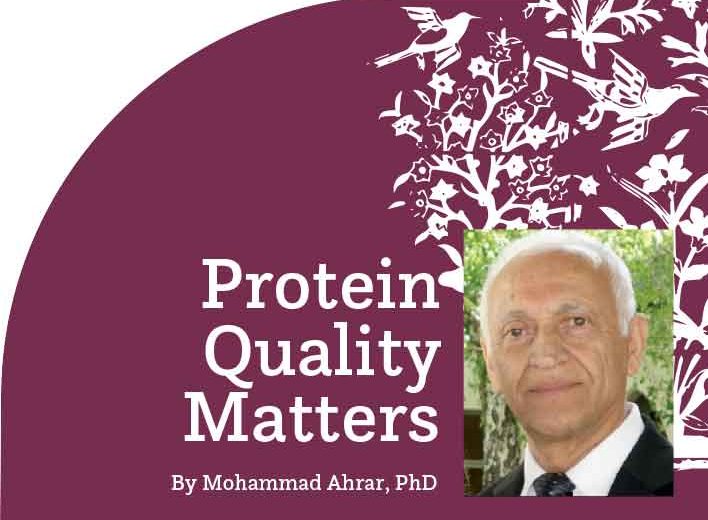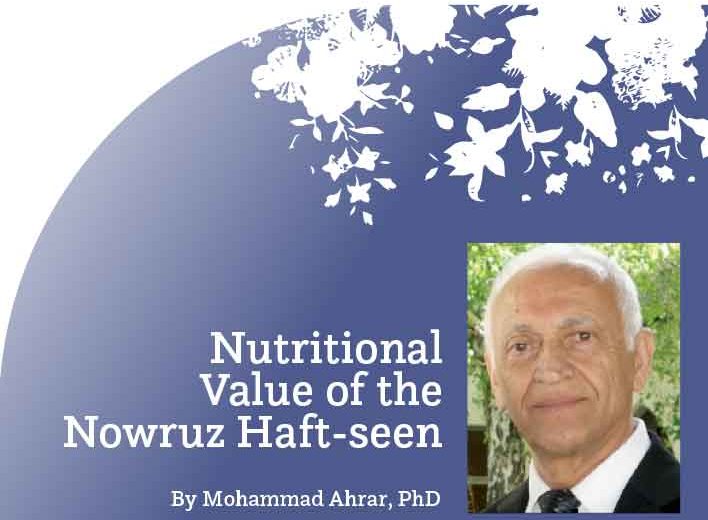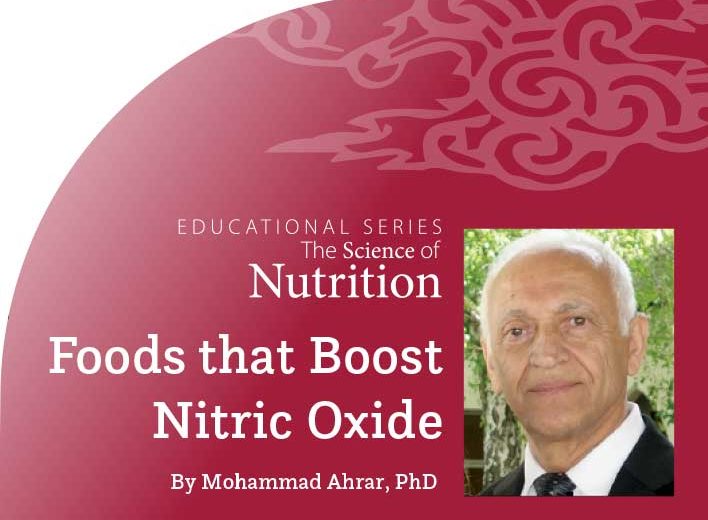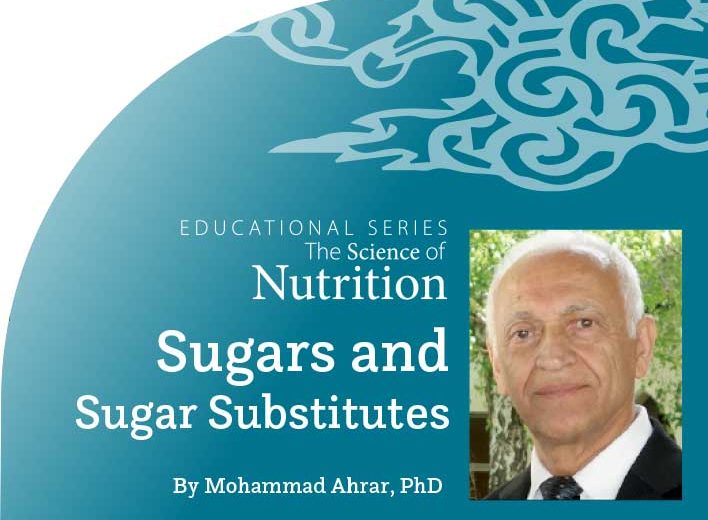Educational Series
The Science of Nutrition
Effect of Heat on Foods
By Mohammad Ahrar, PhD
Introduction
When heat is applied to foods, not only does the heat evaporate water from foods, but it also affects their nutritional value, depending on the temperature level and the amount of water in foods. All foods contain certain amounts of water, from 99% in diet soda, 93% water in most herbs, and 87% in whole milk, to less than 10% in dry grains. Heat affects nutrients in plant foods differently. In this article, we will review the effect of heat on the content and retention of some nutrients in foods.
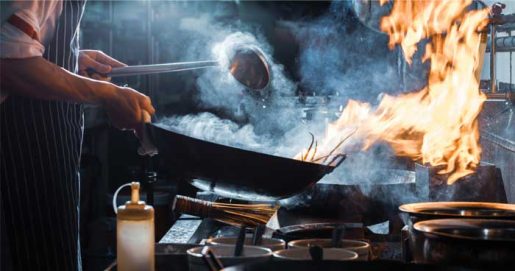
General Effects of Heat on Food
During the heating process of food, a complex series of physical and chemical changes take place. The changes vary in foods according to the heating method and time exposed, which may ultimately change the nutrient composition, moisture, flavor, smell, texture, and color of foods. In the food industry, the main purpose of using high temperatures is to destroy bacteria. A temperature of 165°F (74°C) can kill most bacteria. In aseptic packaging, to kill all bacteria and spores, the temperature is raised up to 240°F (115°C) and under pressure. These temperatures can dramatically alter the nutritional content of foods and beverages.
Effect on Proteins: Moderate heat denatures proteins and deactivates enzymes by changing their chemical configurations, but it may not affect their nutritional values and amino acid content. Heat and cooking temperature can even benefit digestibility of proteins in foods. For example, some enzymes in raw foods can oxidize or reduce the activity of some nutrients. Heat treatment destroys those enzymes and renders the nutrients more available for absorption. Cooking animal products, such as meat, breaks the peptide bonds between large protein molecules and softens the meat for better digestion.
Effect on Carbohydrates: Cooking can break down the complex carbohydrates such as cellulose and lignin that make the cell wall in plants, thereby releasing nutrients that were confined inside the cells and making them available for absorption. Generally, the more moisture vegetables contain, the more vulnerable they will be to heat.
Nutrients Most Affected by Heat: Most water-soluble vitamins like Vitamin C and most B vitamins, such as thiamine (B1) and pantothenic acid (B5), are sensitive to damage by heat. Probiotic cultures are even more delicate and are more sensitive to heat above 120°F (49°C). Fat-soluble vitamins are less sensitive to heat than water-soluble vitamins. Saturated fats generally tolerate heat better than unsaturated oils such as olive oil.
Effect of Heat on Vitamin C: Vitamin C plays a major role in numerous physiological reactions, including collagen formation, activation of some hormones, and formation of carnitine (an essential nutrient needed for the production of energy). It is also an effective antioxidant. Vitamin C is a water-soluble vitamin and is very sensitive to high temperatures. It can easily be degraded during cooking, beginning to denature at temperatures as low as 86°F (30°C) which does not feel too hot to human skin. Studies show that boiling destroys Vitamin C in almost all experimental vegetables and the greatest loss was found in boiled chard, which has a high water content. (1) More information about Vitamin C is discussed in Peyk #173.
Time of Exposure: The effect of heat on different vegetables and the percentage of vitamin C lost at 5, 15, and 30 minutes at 140°F (60°C) are shown in Table 1.
Table 1 The length of time of heating affecting Vitamin C in some vegetables.
|
Vegetable samples* |
% lost at 5 minutes |
% lost at 15 minutes |
% lost at 30 minutes |
|
Spinach |
9.9 |
29.9 |
60 |
|
Green peas |
10.6 |
33.3 |
58.28 |
|
Carrot |
16.5 |
33.3 |
49.91 |
* Values were rounded for easier comprehension.
Effect of Heat on B Vitamins: Generally, B vitamins such as thiamin, riboflavin, niacin, pantothenic acid, biotin, and pyridoxine play important roles as coenzymes to activate enzymes necessary for the metabolism of carbohydrates, proteins, and fats to produce energy and sustain life. Without the B vitamins, energy production would come to a halt. For more information about B vitamins, please visit Peyk #174.
Heating And Storing Methods
Usual heat treatments and cooking methods—such as steaming, blanching, boiling, and microwaving—can be beneficial in some foods, but they may alter the nutritional value of fresh vegetables and other foods. The effect of heat on nutrients can start at 140°F (60°C) and be more noticeable when the temperature reaches 170°F (76°C) or more.
Cooking and Boiling:
Benefits: Cooking food improves digestion by breaking the bonds between complex molecules in plants and animal tissues. Animal products such as meat, pork, and chicken contain complex proteins such as collagen in the connective tissues which are hard to digest. When eggs are boiled, the protein in the egg white will become much more digestible than that of raw eggs. Cooking red bell pepper and tomatoes increases the antioxidant activity of lycopene in those foods. Cooked carrots, mushrooms, asparagus, cabbage, zucchini, broccoli, and peppers supply more antioxidants if they are boiled because the heat destroys the cell wall in vegetables and releases contents for better digestion and absorption.
Harmful Effects: Cooking methods have been shown to reduce several key nutrients in foods. When fruits or vegetables are cooked at high temperatures or for long periods of time, heat-sensitive nutrients such as B vitamins, Vitamin C, and folate are more likely to be destroyed. Studies show that the greatest loss of nutrients happens when vegetables are boiled as compared to steaming them, considering the length of heating stays the same. (2)
Steaming Vegetables: Steaming is generally regarded as a better option to preserve nutrients in vegetables than boiling them because vitamins do not leach into the water and get thrown away. Steaming broccoli significantly increases the retention of Vitamin C, and spinach and chard have high water contents and can maintain some vitamins when steamed rather than boiled.
Blanching: Blanching is a heat-and-cool process that plunges fruits or vegetables into boiling water for a short amount of time, then transfers them to an ice bath to stop the cooking. Blanching slows the activity of natural enzymes in vegetables that can cause loss of flavor, texture, and color. Therefore, vegetables can conserve most nutrients and maintain flavor, texture, and color. The blanching time is very important and varies with the vegetable and size of the cuts. Under-blanching stimulates the activity of enzymes and the effect is worse than not blanching. Over-blanching causes loss of flavor, color, vitamins, and minerals. Some common vegetables that benefit from blanching include: asparagus (blanch time about 2 minutes), broccoli (3 minutes or less), carrots (2-3 minutes), beans (2 minutes), peas (1½ minutes).
Microwaving: Microwaving generally has less of an impact on Vitamin C content than other methods, with high retention (> 90%) observed for spinach, carrots, sweet potato, and broccoli. Microwaving uses minimal cooking water and cooking for shorter time periods, which results in higher Vitamin C retention.
Pasteurization: Named after French chemist and microbiologist Louis Pasteur, pasteurization is a common method of killing bacteria in heated beverages and liquid products. The most common methods of pasteurization are High-Temperature Short-Time (HTST) pasteurization, such as that used for milk (71.5°C (160.7°F) for 15 seconds), ensuring the safety of milk and providing a refrigerated shelf life of approximately two weeks; and Ultra-High-Temperature (UHT) pasteurization, in which milk is pasteurized at 135°C (275°F) for 1–2 seconds, which provides the same level of safety and extends shelf life to three months under refrigeration.
Deep Frying: Deep-fried foods can produce free radicals, which can severely damage body cells. Burning oils can produce toxic compounds and destroy valuable nutrients. For more information about the effects of frying and inflammation, please visit Peyk #185.
Cold Storage: Most bacteria that cause foodborne illness usually either don’t grow or grow very slowly at refrigerator temperatures. The recommended temperature in household refrigerators is 38°F to 40°F (about 4°C). It should be noted that perishable foods will gradually spoil in the refrigerator. Molds can easily grow at refrigerator temperature as long as there is some moisture present. For this reason, food should not be stored in the refrigerator for a long time. Eggs can stay in the refrigerator for a month or two, but they lose moisture as time goes by.
Freezing: According to the U.S. Department of Agriculture, properly handled food stored in a freezer at 0°F (-18°C) will be safe. Freezing slows the movement of molecules and causes bacteria to enter a dormant stage, stopping enzymes from running chemical reactions in cells. Once food is thawed, however, enzymatic reactions can start and bacteria will become active again and multiply to levels that may lead to food-borne illness. Defrosting turkey and meat products should occur inside a refrigerator rather than on the kitchen counter. The reason is that at room temperature, the outside of meat thaws while the inside is still frozen and bacteria can be active and grow quickly on the surface of meat at room temperature.
Reheating: When reheating frozen foods, it is recommended that they reach 165°F (78°C). Soups and liquid foods should be brought to a boil when reheated to be on the safe side.
Summary
Heating food enhances the digestibility of foods and makes some nutrients more available for absorption. Heat can also alter the nutritional content of foods and beverages depending on cooking methods. Most water-soluble vitamins like Vitamin C and most B vitamins are sensitive to damage by heat. Steaming and microwaving retain more nutrients in vegetables compared to boiling. Cold temperatures slow the movement of molecules and stop chemical reactions in cells.
Selected References
1- https://www.ncbi.nlm.nih.gov/pmc/articles/PMC6049644/
2- https://www.liveinhomecare.com/vegetables-that-are-healthier-for-you- cooked-than-raw/gardening/
3- https://www.myfooddata.com/articles/fruits-high-in-water.php
4- https://ods.od.nih.gov/factsheets/Carnitine-HealthProfessional/#h1
5- https://en.wikipedia.org/wiki/Pasteurization#Medical_equipment
6- https://www.bhg.com/recipes/how-to/cooking-basics/how-to-blanch- vegetables/
7- https://www.fsis.usda.gov/food-safety/safe-food-handling-and-preparation/food-safety-basics/how-temperatures-affect-food

